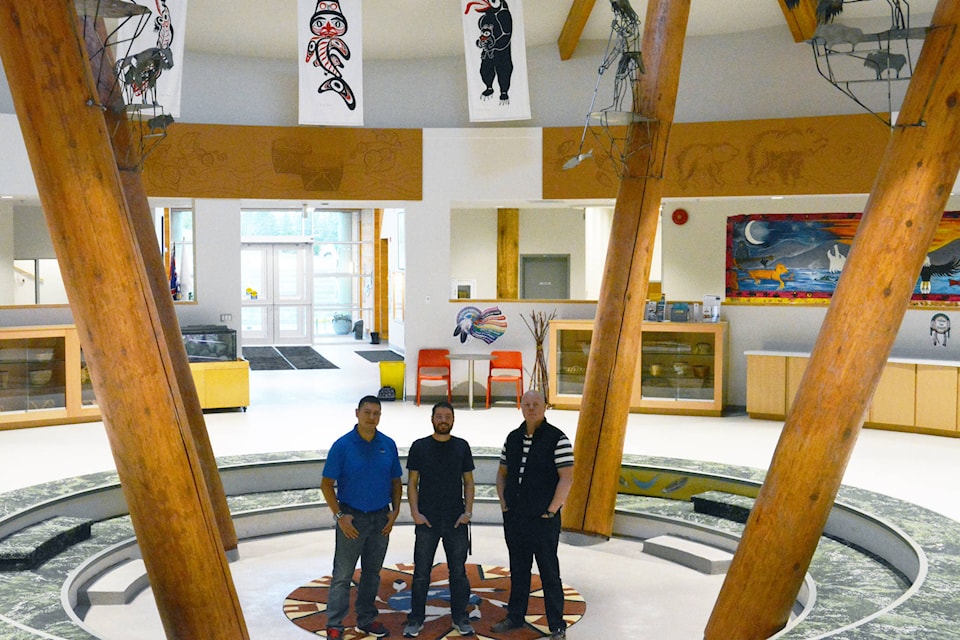It has been three months since the Westbank First Nation unveiled its newly-renovated sənsisyustən House of Learning School (HOLS).
From the outside, the school looks just like any other school, however the space is helping to revitalize the Syilx culture and in the process is helping to advance the process of reconciliation.
While enrollment is expected to hit 120 students next year, learning about their own culture and language (nsyilxcən) has’t always been easy.
Like many First Nations across the country, its culture, language and traditions were subject to decades of cultural genocide committed by the Canadian government to try to eradicate First Nations.
As part of the government’s promise to redress the legacy of residential schools and advance the process of reconciliation, it formed the Truth and Reconciliation Commission of Canada, which published 94 calls to action in 2015.
Among those calls was an acknowledgement that Indigenous languages are a fundamental and valued element of Canadian culture and society and there is an urgency to preserve them.
In many ways, the sənsisyustən House of Learning School is doing just that.
The renovation project started in early 2016 when community feedback was collected to determine how the WFN could upgrade the 25-year-old building.
“Our school has four new classrooms with the renovations. That includes a language and culture room, an artwork room and two new classrooms that will be used by teachers,” said school principle Wes Malo.
Other additions include dozens of new First Nations artwork at the school — which incorporate the four food chiefs prominent in Syilx culture.
In November, final details of the renovated space were unveiled when the artwork received fresh new paint with the help of artist Janine Lott and designer Colin Crabbe.
According to the WFN, nsyilxcən (Okanagan) is the First Nation language spoken by its members and members of seven other Syilx communities in the Okanagan and Similkameen regions which includes First Nation communities across the border in Washington state.
Of the almost 5,200 people that make up the Okanagan Nations, WFN said only 3.7 per cent are fluent speakers.
While WFN chief Chris Derickson said he’d like to turn the facility into a full-immersion nsyilxcən language school one day, language and culture teacher Maynard McRae has acknowledged some major hurdles need to be overcome for that dream to become a reality.
READ MORE: Westbank First Nation members elected Christopher Raymond Derickson Thursday night
“In order for us to be a nsyilxcən immersion school, we need our teachers and staff to know enough to only speak Okanagan.”
“We would need more adult learners and educators to come into this space and help teach the curriculum in Okanagan. It’s definitely a big undertaking.”
Despite the hurdles, McRae said there are already multiple things teachers are doing in the renovated space to help revitalize the nsyilxcən language.
“In the mornings, we gather in a circle to do a prayer all in Okanagan,” said McRae.
“During the morning activities we also sing a song in Okanagan, which is about sharing and getting everyone together.”
One of those songs sung regularly in the renovated space is the Okanagan Song.
WFN member Delphine Derickson and Lower Similkameen Indian Band member Herman Edward created the song to help unify Okanagan Nation members.
One person who helps to sing and promote the Okanagan Song at WFN events is HOLS language assistant Dustin Schmauder. He was brought on by the WFN to teach in the newly renovated HOLS space.
Schmauder said the new language room at HOLS is just one area where the nsyilxcən language is being revitalized.
“We sing a lot in this space. In this room, we have a huge set of hand drums and one bigger hand drum in the corner of the room,” said Schmauder.
“The songs we sing come from all over the Okanagan region. One song we sing is called Fly, Eagle Fly. It’s a beautiful Coast Salish song and the kids really like it.”
Other amenities that have been added with the renovations include additional washrooms, expanded administration offices, storage areas and upgraded mechanical work to the building.
Long term, Malo said he wants the school to have an area where WFN members can process and smoke meat. Renovations to the school’s playground will also get underway when the ground thaws next spring.
The renovations were primarily funded by the WFN, the Indigenous Services Canada Innovation Fund and the provincial Clean Energy Business Fund.
For more information on the nsyilxcən revitalization efforts, visit the WFN’s website.
